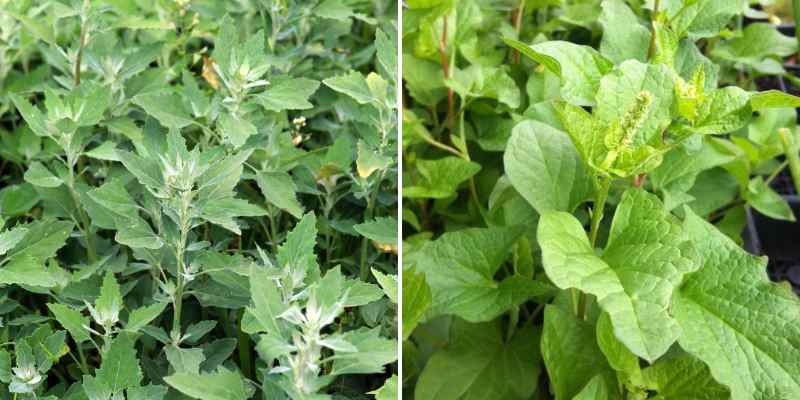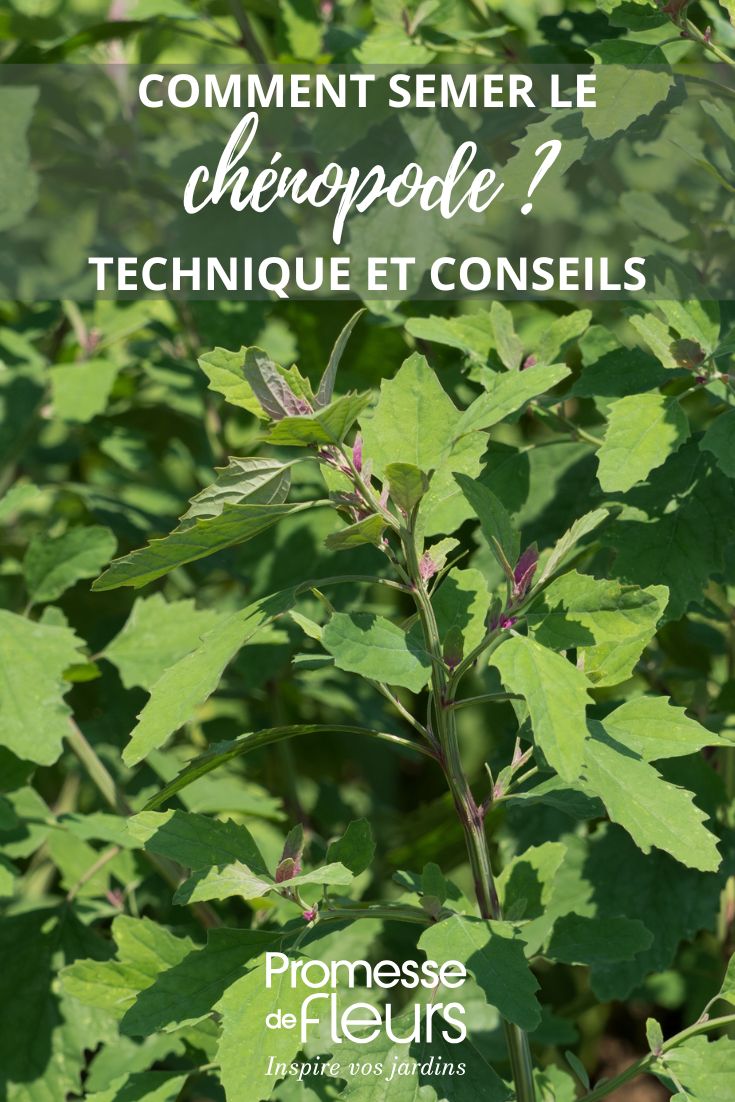Goosefoot, resembling orach, is a leaf vegetable from the Chenopodiaceae family. Sometimes called wild spinach, fat hen or Good-King-Henry, it's one of the heritage vegetables. Rich in provitamin A and calcium, it's grown in vegetable gardens for its triangular leaves which can be cooked like spinach or eaten raw in salads. There are two types of goosefoot - annual and perennial, recommended for vegetable gardens as it's much less invasive. Our tutorial gives you all the advice you need to successfully sow goosefoot!

When to sow goosefoot?
Sowing is generally done from March to April-May for harvesting from mid-May for perennial goosefoot. You can also sow in August for annual goosefoot, as it tolerates drought much better than spinach, for an October to November harvest. You can even do a late sowing in September-October for a harvest the following spring with perennial goosefoot (Chenopodium bonus-henricus).
Where to sow goosefoot?
Sow goosefoot in partial shade, which it prefers, or even in a shady spot for perennial goosefoot. It's not too fussy about soil type, but the soil shouldn't be too dry and should be well-drained. The soil should ideally be rich in organic matter. You can add compost when preparing the soil before sowing or well-rotted manure.
Sow at the edge of your vegetable garden to provide shade for other leaf vegetables, for example.
How to sow goosefoot?
You can sow directly in situ, meaning in open ground, as soon as the soil begins to warm up.
- Sow thinly, in rows, the goosefoot seeds in shallow furrows (1 cm) spaced about 50 cm apart to allow good plant growth
- Cover with a thin layer of compost
- Firm down with the back of a rake
- Water with a fine-rose watering can and keep the soil moist until germination, which usually takes 7 to 12 days depending on the climate. Once the seedlings have emerged, reduce watering to avoid excess moisture.
- Thin out after a month, when the plants have developed two true pairs of leaves, to 35-40 cm apart.
Harvesting occurs about six weeks after sowing. Pick young leaves and stems as needed.
Goosefoot care
- Mulch well around the base to retain moisture.
- Between late June and late July, pinch out flower spikes to stimulate leaf production in perennial goosefoot! It will reliably return for 4 to 5 years.
- Cut back the entire plant at the end of summer when dealing with Chenopodium album (annual goosefoot).
Annual white goosefoot (Chenopodium album) has a bad reputation as it's sometimes considered a weed since it self-seeds so readily. To avoid being overrun, it's strongly advised to cut off flowers as soon as they appear!
Learn more about goosefoot and Chenopodiaceae...
You'll know everything about goosefoot by reading our complete guide: Goosefoot: planting, sowing and harvesting.
Amaranth is another vegetable whose leaves are eaten, but better suited to southern regions as it loves heat. An interesting alternative for south-facing vegetable gardens and warm regions.
I'll give you some recipe ideas with this type of vegetable in orach in cooking: plant-based recipes of a heritage vegetable to rediscover, and How to harvest and use amaranth in cooking?
































Comments